The Breitling 765 AVI / Co-Pilot Series of Watches – Part III
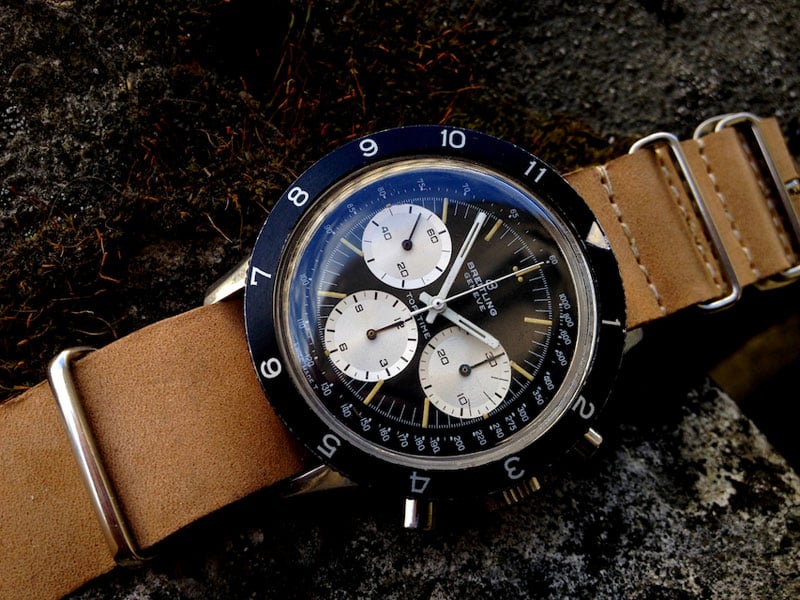
The introduction of the automatic chronograph movement was a cataclysmic event for the Swiss watch industry. Up to this point there were only two kinds of watches: the self-winding watch, and the chronograph. In 1969 however this discord passed into history. A fusion of these two became a new reality. In this third and final part of the history of the Breitling 765 AVI / Co-Pilot we are going to examine the impact that the automatic chronograph had for the Avi-Co-Pilot family of chronographs up to their demise in the late 1970’s.
Returning to the AVI/Co-Pilot series we must stress that initially, the introduction of the automatic chronograph did not have any major impact in the lineup. However, the year 1969 marked a radical departure. The watches grew up a little bit, from 41mm bezel diameter to a 42.4 mm diameter, however were still powered by the manually wound chronograph calibres. There were three ‘new’ references, plus one. First of all the ref.7650, which was basically a slightly larger ref.765CP (see part 2).
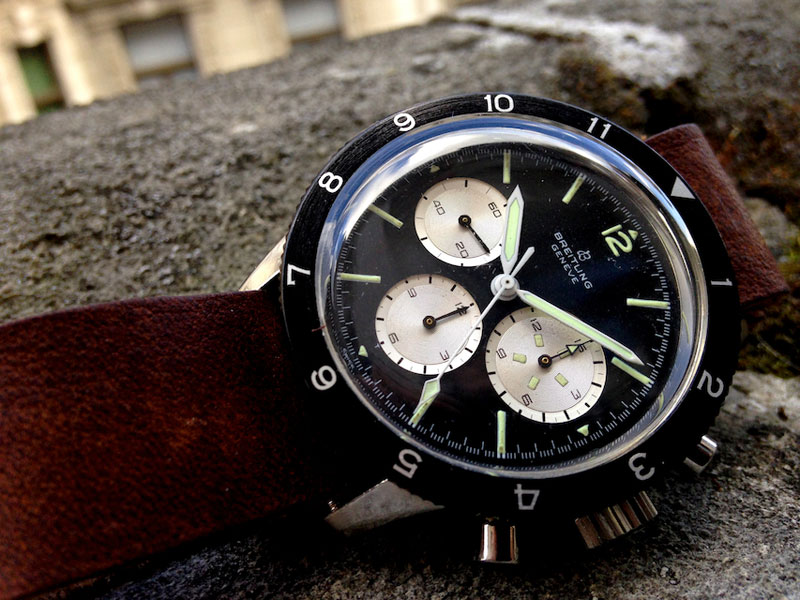
The new ref.7650 Yachting was slightly larger than its ancestor, reference 765CP Yachting and also it also featured a slightly redesigned bezel. Its reference was changed, late in the year 1969, from ref.7650 Yachting to ref.7660.
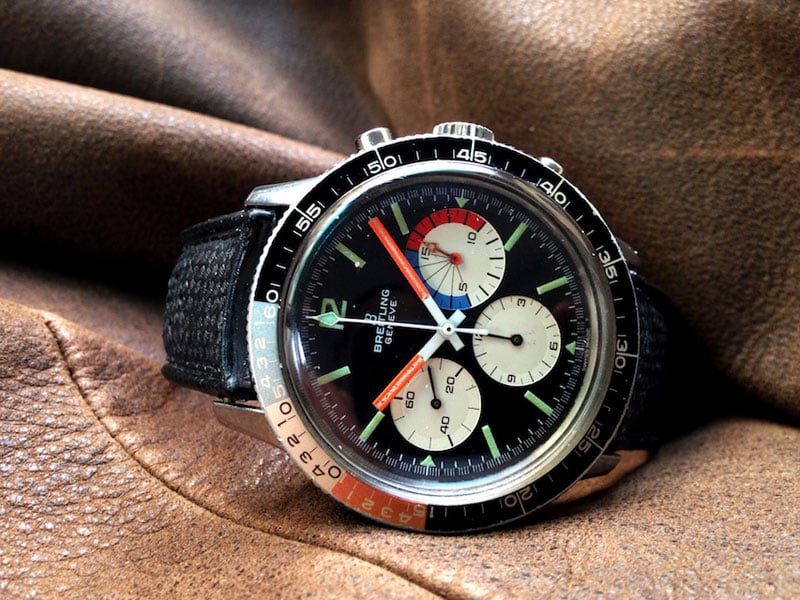
Last but not least we have the introduction of the ref.1765 Unitime 24-hour model. Breitling unfortunately does not give any comments on production numbers and the information we’re using for this series of articles are gather by Dracha and Watchfred (who prefer to use their forum nicknames.) Breitling collectors and connoisseurs Dracha and Watchfred have spent hundreds, maybe thousands, hours of research to find out more details about the Breitling Avi series of watches.
Dracha believes that Breitling made approximately 1,000 watches of the ref. 1765 with the 1969 case. However he tells us: “a batch of these cases was used to make a ‘TopTime’ versions, with a 12-hour time indication, and powered by the Valjoux cal. 7736 and/or the Venus cal. 178 movements. These watches were given the reference 1765/36 when equipped with the Valjoux cal. 7736 movement or ‘just’ with ref. 1765 if they had the Venus cal. 178 movement.” There are also some indications that the 1765 Unitime might have appeared earlier, as Watchfred points out: “a ref. 1765 already appeared in the 1965 catalog, however that was under the name ‘Unitime AVI’, implying it was launched before the 1965 switch to the CP Co-Pilot branding”.
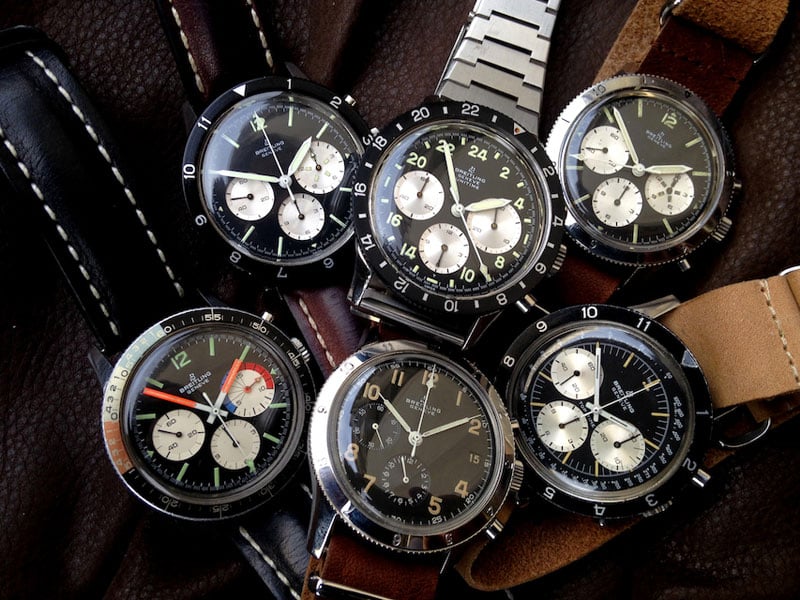
In parallel, Breitling decided to go all in, and as a result we witnessed perhaps the greatest transformation of the Avi/Co-Pilot series of watches since its inception in the Fifties. First and foremost the company decided to use its automatic chronograph movement, calibre 11, that was developed together with Heuer, Büren and Dubois-Depraz. In late 1969 they put the ‘big case’ Chrono-Matic into production with the reference 7651. This was a huge chronograph, even by today’s standards, measuring 48mm in diameter. It had a bi-compax layout with the date window at 6 o’clock, crown at 9 o’clock and chronograph pushers at 2 and 4 o’clock.
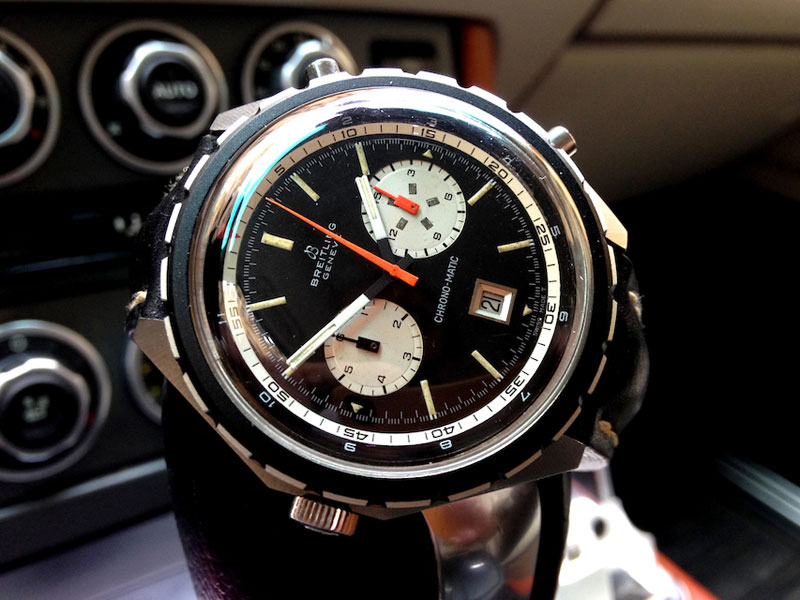
Breitling also made available the ref.7652 which had the manual winding Venus calibre 178 – the workhorse of the Avi/Co-Pilot watches right from the start. Both of these models could be supplied with different trims; either a countdown scale with coloured segments, especially useful for Yachting, or a double scale bezel (12+60) which simultaneously showed the time in two or more time zones; or could act, as the Breitling catalogues of the era state, as an ‘aide-memoir’.
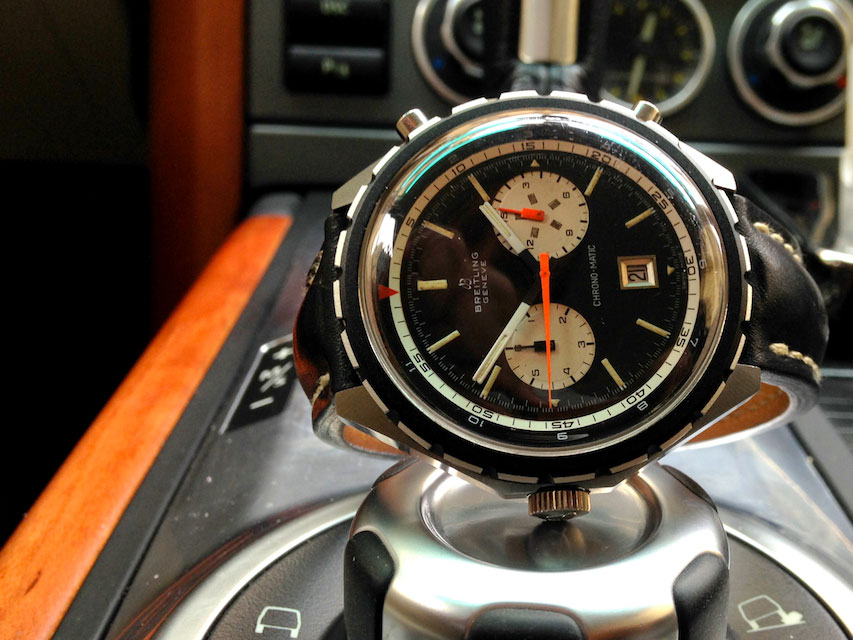
In late 1973, the company released two new references, the ref.7661 and ref.7662. Yet again we had the proven recipe of a combination of auto and manual wind calibers (cal11/12 and Venus 178) respectively. Yet again we had a massive size, the yachting trim, different bezels. Perhaps Breitling wanted to keep as much continuity as possible in the collection, and they didn’t see any advantage in changing too much. The main difference was that from that point on, the ref.7661 had the new cal.12 instead of the cal.11. The calibre 12 was the new and improved version of calibre 11, and featured a faster beating balance (21,600 vph), and reinforced some of the major components. Also, the main plates were now gold rather than nickel in colour.
For two years it was all quiet in the AVI/Co-pilot family. However in the 1970’s the markets were fragile with the arrival of cheap Japanese quartz watches. The Speedmaster from Omega was the bonafide Moonwatch now, the Daytonas also started to become a ‘must’ for the rich and famous, Zenith had the Primero and Heuer flooded the market with a large variety of chronographs. In the middle of all this, Breitling introduced the ref.7656 Top Time (1975-1978).

The company from Geneva returned to a more reasonable size (42mm diameter) and the case was almost identical with the 7650 Co-pilot and the 1765 Unitime. It had a reverse panda tri-compax layout with an internal tachymetric scale. The rotating bezel remained in the familiar ‘Division 12 scale’ form. For the first time, the Top Time came with a Valjoux movement, calibre 7736. This was a manual wind caliber that measured up to 12 hours, had 17 jewels, ran at 18,000 vph and had 45 hours of power reserve. A true workhorse calibre for a truly marvelous chronograph, and, as later will become clear, the last of the family. The fun fact with this model was that the 7656 Top Time did never appear in a catalog or Breitling advertisement.

Breitling, as we already stated, was the father company of the chronograph in its current form; it produced the iconic Navitimer, the Emergency and countless other important chronographs. Within the company’s portfolio the Avi/Co-Pilot series of watches was extremely important. It was innovative (for instance with the digital window of the ref. 765), it competed for military contracts (ref.765 Analogue), and then when the watches of that family started to change, they competed with offerings from players like Heuer, Omega and Zenith. Sadly the Avi/Co-Pilot family was and still is totally underrated in the watch collecting community. The Avi/Co-Pilot family has seen quite a lot of transformations, throughout its lifespan. Sometimes this was visible in the Breitling catalogues, sometimes it wasn’t. This does prove how versatile the Avi/Co-Pilot platform was. Despite the obvious overshadowing of the Navitimer, the Avi/Co-Pilot watches are very important tool chronographs that are aesthetically classic in their substance. The Avi/Co-Pilot chronographs form a very interesting chapter in Breitling’s history and especially their legacy of making chronographs.
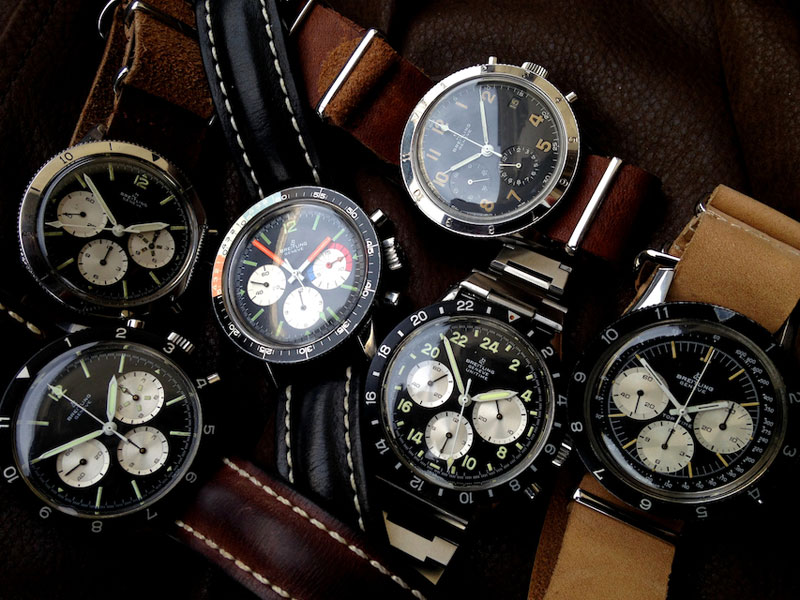




1 response
I love the Top Time. Classic. Uncommon.